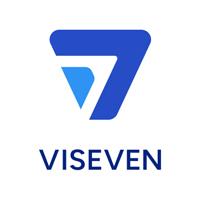Patient-centricity and HCP engagement: 7 challenges in pharma and life sciences outreach

Healthcare professional (HCP) engagement is a term known to everyone who’s trying to win attention in the domain of pharma. Traditional ways to engage HCPs are losing their value, but new engagement models are yet to be established as an industry standard. Finding the golden mean is quite a hurdle, and there are substantial challenges stopping many pharma companies and agencies from reaching out to as many potential patients and HCPs as possible.
In this guide, I will go through the ways to get the most out of your HCP engagement strategy and conclude with the most important tip: improve patient-centricity.
The importance of HCP engagement
HCP is a term that encompasses individuals within the pharmaceutical or healthcare industry who, one way or another, deal with patient care. Naturally, pharma companies want to establish that precious link of trust with HCPs by all available means because the latter may recommend or prescribe certain products or services to their clientele – and this we refer to as HCP engagement in pharma marketing.
Boosting engagement is a complex step-by-step process that includes researching the audience’s needs, studying their behaviour, trying out different interaction methods, and delivering quality products and services, of course, to name a few directions. And it goes without saying that clear and consistent communication must be established with patients as well.
7 challenges encountered in reaching healthcare professionals
There are seven viable HCP engagement solutions that address the respective challenges inherent to the modern pharma marketing industry:
#1: The audience is looking for a more personalised approach compared to previous years
Targeting as many channels as possible is problematic for marketers because they risk wasting resources on delivering irrelevant messages that are not even viewed. Thus, personalisation is the way to go.
According to Epsilon, customers are more inclined to engage with content that’s tailored for them. Get to know your audience by surveys and analytics, determine the channels and platforms they use and when they do it. Then, proceed to segmentation.
#2: Resistance to digitalisation
The pandemic forced us to move our businesses online, whether we liked it or not. As a result, most marketing campaigns from 2020 onwards took place online. Still, some pharma companies struggle with transitioning from legacy processes.
Digitalisation is the future of marketing, and there is no way around it. The best way to deal with it is to just give in and start trusting technology a little more. Traditional marketing is not going anywhere but, in many cases, it will be holding you back.
For instance, an HCP engagement platform, which is just a kind of a specialised CRM, is described as "crucial for driving revenue". What is HCP engagement strategy worth without such a platform, then? But both employees and medical specialists will face the learning barrier and use it reluctantly the first time they see it.
Same rule applies to software used in clinical care for engaging patients, like Health Cloud. It is built to enable patients to get personalised communications with HCPs and have a view of relevant care offers and thus improve health. It goes well in line with patient centricity in the pharmaceutical industry. Still, without education and proper onboarding, they will resist any such healthcare system.
#3: Volatile market and technological singularity
It is increasingly hard to build a marketing strategy that would stay efficient for years. Social media shadow bans, search engine updates, the outburst of new technologies and media – these and many other challenges sever the link between pharma marketers and HCPs.
Approach this matter by experimenting with a few same-purpose techs at the same time and staying agile in marketing. Keep an open eye for tech trends. One disruptive technology may be a game changer and adopting it early will give you the edge over competitors.
#4: Strict regulatory environment
All pharma companies’ products, services, and marketing content must comply with the respective markets’ regulations – all for the sake of patient safety. The content, for that matter, obligatorily has to pass an MLR review.
There is no way around regulations, but we can surely make content production easier with modularity. Viseven eWizard is one of the solutions for life sciences companies that support modular content and help streamline the approval process to back up HCP engagement strategies.
#5: Difficulty building trust with HCPs
Investing time and effort to build trust is a fundamental part of any marketing strategy. Yet, after the COVID outbreak made arguably the best way to establish trust much less accessible (that is, eye-to-eye meetings with MedReps), the industry at large shifted to the digital means of communication.
Speaking of HCP digital engagement, consider the following principles to build the communication upon:
- Patient-centric approach;
- Adherence to ethical and industry standards;
- Accountability;
- Transparency in all operations;
- Quality assurance.
Whenever possible, represent your company in person and be there for HCPs at various pharma events. I always do my best to attend as many as I can, deliver a speech, moderate a panel, network, and shake hands.
#6: Getting HCPs’ attention demands a lot of effort
The digital environment is extremely competitive, and human attention spans are limited. If HCPs are already bombarded with all sorts of ads and pop-ups, how do they notice an important message about a drug you just released?
Create engaging, unique, high-quality content: it is a given. A huge part of it is knowledge of what the HCPs are looking for and what they shy away from. Improve personalisation and interactivity. Partner with pharma opinion leaders and media to increase presence. Finally, scale and streamline content production with high-tech content management systems.
#7: Privacy and general data protection
Handling patient feedback, sensitive data, and ensuring privacy compliance, especially with regulations like GDPR in Europe and HIPAA in the United States, makes up a significant challenge. Maintaining secure communication channels is crucial for outreach efforts.
If your organisation deals with personal data (for instance, through CRMs), make sure that the respective local and global regulations are adhered to, which includes asking for explicit consent to collect and process data, employee training, regular security audits, data breach response planning, and proactive collaboration with regulators.
How to overcome patient outreach challenges in pharma and life sciences
Although the challenges of building sustainable relations with HCPs and patients correlate, it is important to remember that the latter is the end user of a pharma production pipeline, which is an obvious reason to develop patient-centric solutions.
In the case of over-the-counter medicines, pharma marketers can focus on patient engagement, and the messaging must be relevant and appropriate to the context of every recipient (e.g., insurance, rehabilitation, disease prevention suggestions). But there’s much more to patient-centricity than that.
One key aspect that demands attention is patient education and health literacy. Incorporating innovative technologies, such as gamification or virtual reality tools, can enhance it by providing immersive and engaging patient experience. Patient communities play a big role in this regard and providing them a digital media would build a foundation for support network and facilitate easier communication. More than once, Viseven itself was involved in the development of digital catalogues or knowledge bases for mobile users.
Of course, AI promises solutions to the common outreach challenges. We use it to automate visual content production, organise asset storage, and simplify the MLR approval workflow.
The competition between life science companies is literally a fight to improve patient outcomes, so faster implementation of the most efficient tech tools serves the greater good.
In conclusion, patient-centric care remains the most reliable pharma marketing trend to adhere to in 2024. There are plenty more technologies to keep an eye on, and it remains to be seen how we can use them for the greater good.
About the author
 Nataliya Andreychuk is the CEO and co-founder of Viseven, a global MarTech services provider for life sciences and pharma industries. She is one of the top experts in digital pharma marketing and digital content implementation and has more than 14 years of solid leadership behind her belt. Andreychuk is among the strongest female leaders in the marketing technology world. She has been contributing her vast expertise to developing smart digital solutions and software, which are now serving clients in over 70 global markets, delivering intelligent, personalised content across channels, platforms, and countries.
Nataliya Andreychuk is the CEO and co-founder of Viseven, a global MarTech services provider for life sciences and pharma industries. She is one of the top experts in digital pharma marketing and digital content implementation and has more than 14 years of solid leadership behind her belt. Andreychuk is among the strongest female leaders in the marketing technology world. She has been contributing her vast expertise to developing smart digital solutions and software, which are now serving clients in over 70 global markets, delivering intelligent, personalised content across channels, platforms, and countries.
About Viseven

Visevenis a future-inspired global MarTech Services Provider for Pharma and Life Sciences industries with more than a decade of experience. Viseven's digital transformation centre offers innovative solutions for companies of different sizes and digital maturity levels by merging marketing and digital technology expertise with innovation and strategic capabilities. The company's solutions, products, and services are actively used by the TOP 100 Pharma and Life Sciences companies in more than 50 countries around the globe.
Follow Viseven on social media:LinkedIn,Twitter,YouTube,Facebook
Follow Nataliya Andreychuk on LinkedIn











